How Many Ads Should I Put on My Website?
There is a common misconception among publishers surrounding ad placement count on a website. Many believe that more ad placements equal more ad revenue. This isn’t entirely true because it can harm user experience and ad inventory’s overall value.
In this article, you’ll learn what a balanced ratio between ads and content is. What can happen if you overcrowd your website with too many ads, and what should you consider when serving ads on your site?
Let’s dive into the details.
Why not overcrowd your site with too many ads?
Currently, there are no limitations on how many ads can be displayed on your site. However, Google recommends that ads not exceed your content; otherwise, you may face a Google Policy violation. If you serve ads on a page with no content and zero user value, you may have violated Google’s Webmaster guidelines, leading to a policy violation.
Google states: “Advertising and other paid promotional material added to your pages should not exceed your content. We may limit or disable ad serving on pages with little to no value and/or excessive advertising until changes are made.”
Drawbacks of overcrowding your site with ads:
- Lower rankings on search engines and bad UX
In a recent Google Hangout meeting, John Mueller, the search advocate at Google, explained how Google deals with sites with too many ads. If Google catches that your site is overloaded with ad content, it may remove your site from search.
If the ad content exceeds the written content, it leads to a poor user experience. J. Mueller also gave an example of how the two Google algorithm updates impacted those sites on rankings.
- Page Layout Algorithm: Launched in 2012. Impacted search engine rankings for sites that had too many ads above the fold.
- Page Speed Algorithm: Implemented in 2018 and lowered the rankings for sites with a slow loading speed caused by too many ads.
Another algorithm update that wasn’t mentioned is Core Web Vitals, which will be launched in May 2021. This update will affect sites with poor user experience.
- Low CPMs and CTRs
If the site’s every free ad space is filled with an ad, it is less likely that users will click on it just because there is too much happening (content plus many ads). This makes your site intrusive, causing low CTRs and engagement, poor ad viewability, and low viewable time for ads.
With an ad overload, your ad inventory becomes less valuable. Meaning it gets less attractive for advertisers. They tend to either pay less for ad impressions or stop bidding on your ad inventory at all—this leads to low CPMs, a drop in fill rate, and ad revenue for publishers.
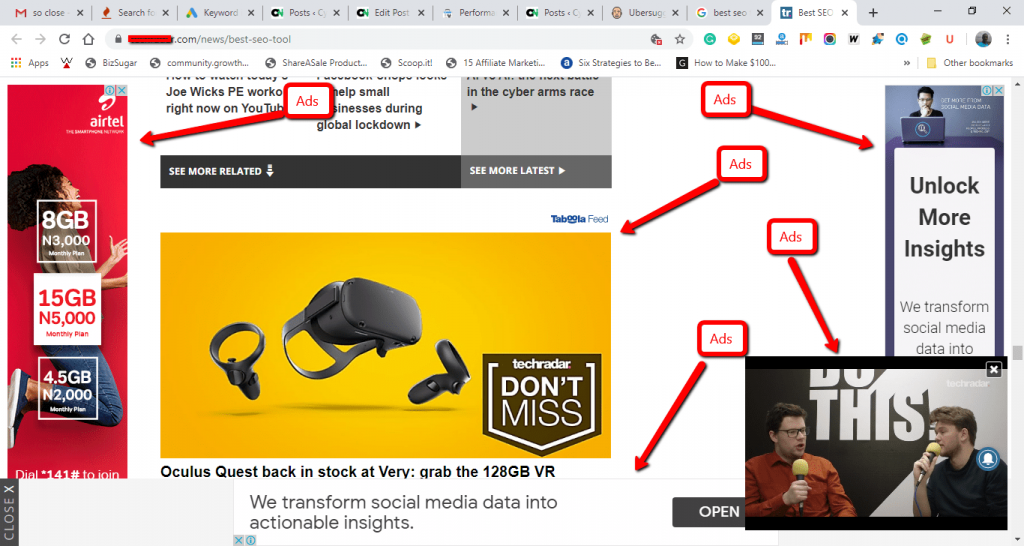
Source: Cybernaira
- Less ad revenue
Serving too many ads won’t increase ad revenue because advertisers are not interested in bidding on low-viewability placements.
- Increased bounce rate
If users see that the page includes too many ads and doesn’t lead to what they were searching for, they will exit the page and might never return to your site. Intrusive ad formats like pop-up ads can cause the same issue.
You have to make sure that you choose the right ad formats, like rich media ads or standard display ads to avoid intrusive advertising.
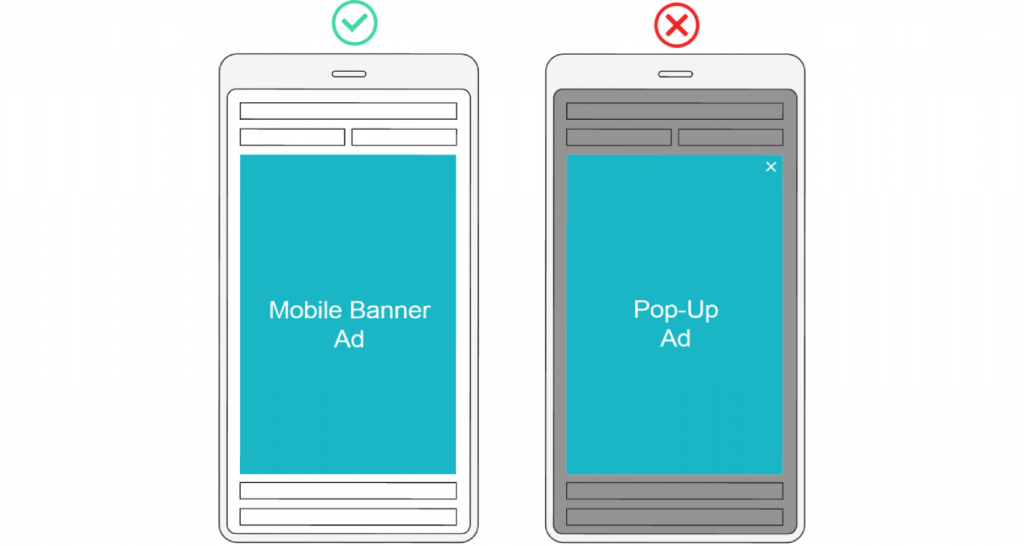
What is a good ratio between content and ads?
Since Google states that ad content shouldn’t exceed written content, our experts suggest a healthy ratio to achieve a good UX and maintain a better value of ad inventory–30% of ads and 70% of the content.
If you decide to serve more than 1 to 3 ads per page, you must first look at your site’s content. For example, writing a short blog article (<300 words) and displaying 5 ads on the page will result in a high bounce rate and eventually spam the page with many ads.
Keep in mind that sometimes fewer ad units perform better than more.
We always encourage our publishers to focus on quality content creation and allow us to serve quality ads and provide personalized solutions for their sites. By filling the best performing ad placements and allowing premium ad buyers (SSPs) to bid on publishers’ ad inventories, we can increase their ad revenue.
How many ads should I put on my website?
The answer is, it depends on your site’s:
- Layout
- Length of Content
- User behavior in terms of page views, session duration (all this data is accessible in your website analytics reports like Google Analytics)
For publishers that don’t serve any ads on their sites, Setupad experts suggest to display:
- Anchor ad for desktop and mobile
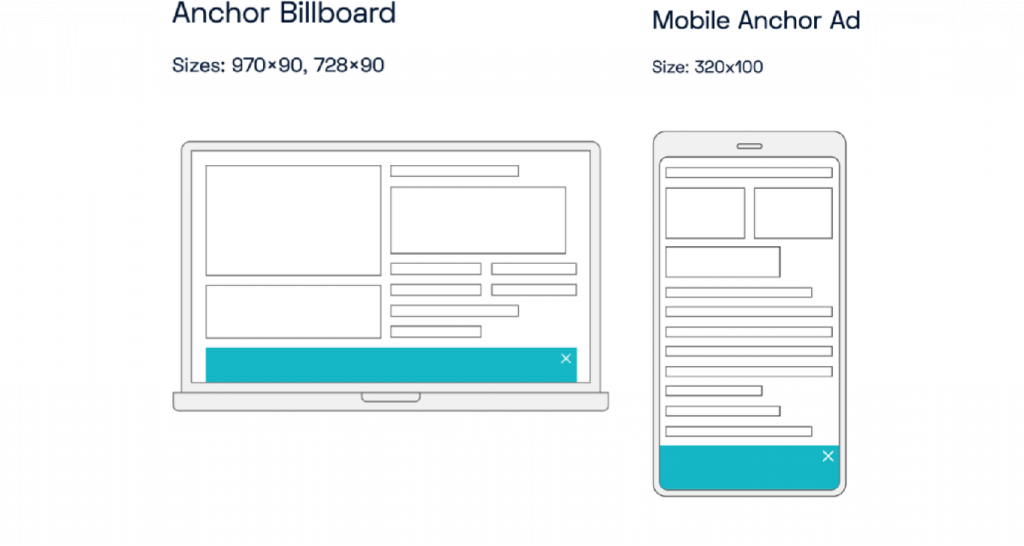
- Interstitial ad – 300×600, 336×280, 300×250 (mobile and desktop)
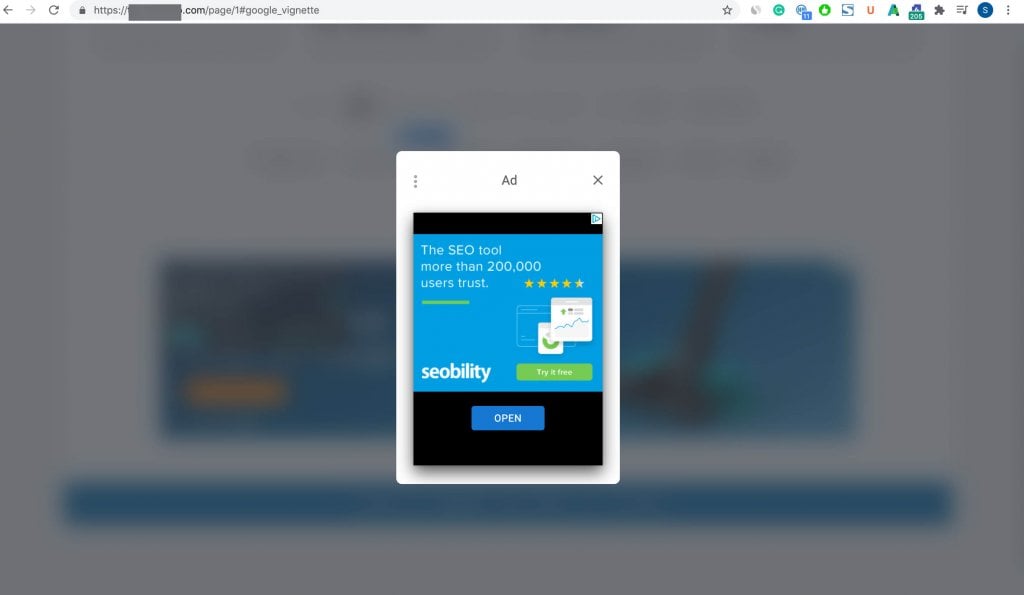
- Sticky sidebar ad for desktop if necessary
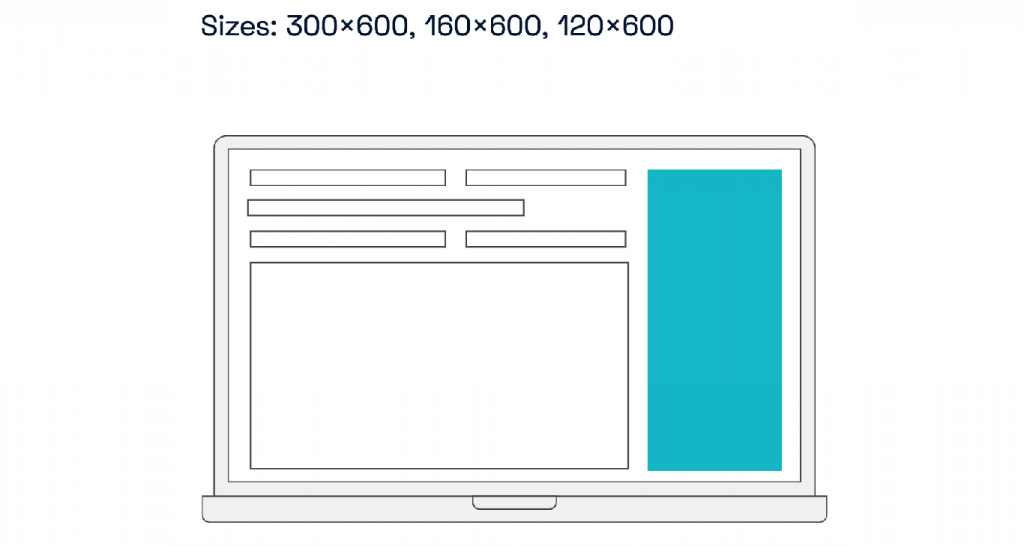
Remember, the best-performing ad formats and placements may vary since every website is unique. That’s why you should find a trustworthy monetization partner to help you choose the most suitable site.
For those publishers who already serve ads, Setupad experts suggest:
Choose only the best-performing ad placements and optimize them. There is no point in having 10 ad units on a single page because it can cause the previously mentioned drawbacks, like lower CPMs and CTRs.
It’s always quality over quantity. In this case, having 4 optimized ad placements with higher viewability is better, resulting in higher eCPMs.
In the long term, by making your ad inventory limited, it becomes more exclusive for advertisers, and they are ready to buy impressions for higher prices. Our experts suggest choosing ad formats like sticky or interstitial ads with higher eCPMs than standard display ads.
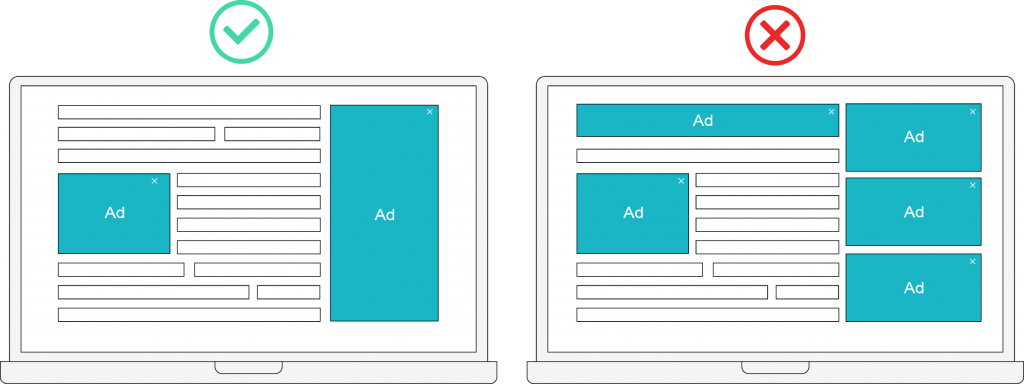
Should I display ads on each page on my site?
There is no ad limit per page as long as users are engaged with the content. For example, the user scrolls down the page, and the content and ads load dynamically (infinite scroll).
Setupad Expert Opinion:
Povilas Goberis, COO at Setupad: “Publishers should keep a good ratio between inscreen ads and content but at the same time use modern content display methods like infinite scroll and ad load techniques, such as lazy-load. The number of ads per single page view may very well exceed 20 or even 30. That’s just a matter of how the publishers manage to engage the users with content and how it is displayed.”
However, there is no need to display ads on pages like ‘About us’ and ‘Contact’. These pages contain more or less informative, general information about your website, and ads will only distract your users.
Here is the guide on how to remove ads on specific URLs if you are a Google AdSense user.
Conclusion
There is no guarantee that you will generate more revenue by displaying many ads on your site; however, if your created content is engaging, it might work. Fewer but optimized ad placements will have higher ad viewability, and advertisers will be willing to pay higher prices for ad impressions, generating more ad revenue for you.
Still unsure if your site contains too many ads, and what are the best-performing ad placements for your site? Our team of experts will help you choose the optimal amount of ads that will increase ad revenue to the maximum. Join Setupad today!


